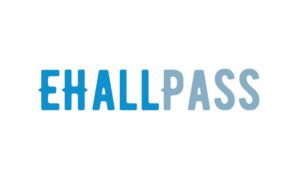I distinctly remember the constant disruptions and wasted time caused by outdated paper hall passes in my teaching days. But schools now have a better solution in eHallpass to manage visits away from class seamlessly. The mobile app eradicates hassles through contact-free hall access using school-issued devices.
However, the platform can’t run on autopilot – dropping it into practice without guidance risks poor usage and abandonment. Proper training is imperative for adoption. Here’s how to get your staff and students fully up to speed on capitalizing on all eHallpass has to offer.

Start with Staff Buy-In
Before large-scale student rollout, get staff aligned behind goals for the app first during preliminary professional development sessions. What recurring pain points aim to eliminate – monitoring return times or forged passes?
How will uninterrupted learning blocks benefit pupils most? Discuss usage policies and appropriate reasons warranting passes to encourage proper habits from the outset. Highlight security enhancements, attendance automation integration and other administrator advantages secured.
Next, provide overviews of core app functions using visual guides and demos. Review teacher workflows for generating passes with configurable permissions then scanning codes displayed on student devices to validate exits.
Allow exploration in sandboxes, temporarily disabling any usage restrictions so employees grow comfortable tinkering. Field real-time questions and suggestions to build guides addressing likely FAQs. Supply tip sheets, instructional videos accessible asynchronously and quick references recapping the next steps.
Educate Student Audiences
With staff trained, focused student instructions ensure proper habits stick from the jump too. However, vary introduction methods and specifics by age group needs. For primary grades, center materials around simplified scanning interactions granting exit access.
Incorporate colorful infographics and relatable language affirming the app’s purpose to improve their educational experience by eliminating hassles. Answer fears about potential added complexity.
For older pupils, cover expanded features available through their view like routes to destinations, pass rejection reasons, teacher comments and metrics on usage frequency. Emphasize proper pass function so denied requests don’t overwhelm support teams. Prevent improper behavior like device battery drain or attempts when attendance is marked absent. Install accountability but maintain ease of use when weaving in advanced perks.

Plan Accessibility Accommodations
Avoid assuming universal comfort levels interacting with new technology, especially when disabilities present additional barriers to certain students. Design introductory eHallpass experiences accordingly through specialized equipment, workflows and pacing attuned to proficiency variances.
Strategically enable accessibility options based on documented needs in IEPs and 504s only. Define if teaching assistants generate passes for greater independence versus teachers providing approvals.
Above all, exude patience and collect feedback routinely to gauge the effectiveness of training techniques leveraged. Be ready to rethink portions entirely if engagement drops or frustration is heightened once launched. Any change brings periods of adjustment and platforms like eHallPass aim for simplification rather than additional student stress in daily journeys.
Reinforce, Enhance and Sustain Usage
Just like school safety drills, refresh staff and students on proper eHallpass usage regularly to sustain diligent operations. Schedule quick start retraining annually capturing new joins while recapping engrained expectations that current users potentially drifted from over breaks. Treat sessions as open discussions for proposals on expanding usage now that community comfort levels have risen.
Perhaps creative applications emerged for scenarios unconsidered initially or process holes appeared on certain campus areas needing to be addressed. Revisit admin metrics to target lagging adoption rates among particular teachers or general pass usage patterns.
Brainstorm incentives for responsible usage or friendly competition between classes. What started as basic functionality training may uncover growth possibilities not realized before. Inserting small engagements sustains energy, enhances existing momentum and unifies evolving best practices.
The Power of Proper Change Management
Like most technology platforms implemented in regulated environments like K-12 education, realizing maximum impact hinges largely on the surrounding change management. When constituencies understand the rationale behind rollouts, learn properly through receptive methods and reinforce continually in usage, tool potential gets unleashed sustainably.
Schooling leaders know overhauling engrained elements like hall passes requires finessing behavioral change before operational change. Take the time to train thoughtfully first and then maintain momentum. The long-term payoffs of ethically improving academic experiences for all make the effort eternally worthwhile.